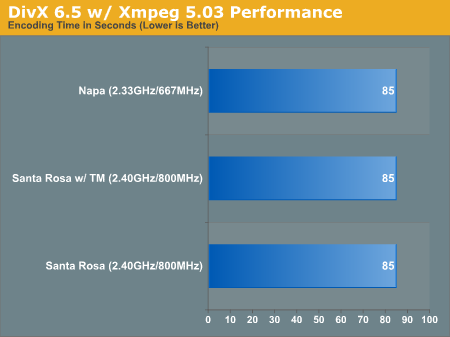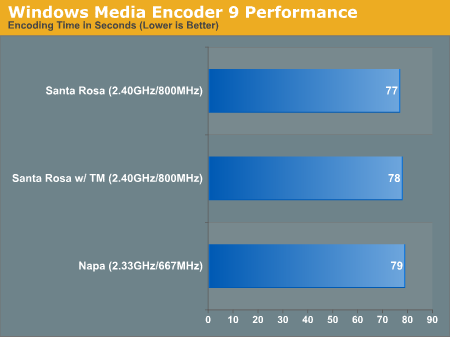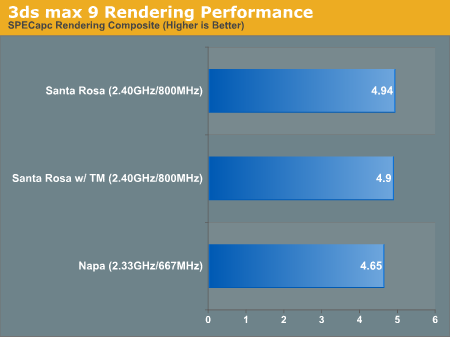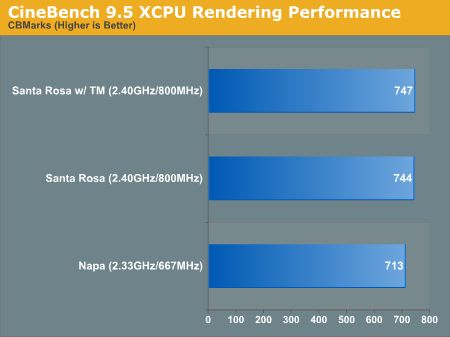Intel Santa Rosa Preview: Centrino V Evolves
by Anand Lal Shimpi on May 10, 2007 12:00 AM EST- Posted in
- Laptops
Media Encoding - DivX & WME9:
We turned to our DivX and Windows Media Encoder tests to provide a quick look at whether the faster FSB changed media encoding performance all that much:


For the most part, it didn't. Performance remained relatively unchanged between platforms, it looks like the increase in FSB frequency was mostly to enable future higher clock speeds.
3D Rendering - 3ds max 9 & CineBench:
Our final two tests are our 3D rendering favorites: 3ds max 9 and Cinebench 9.5.

Under 3ds max 9 we actually see a decent performance increase due to the faster FSB, over 6%. While it's not huge, it is representative of a situation where the previous Centrino platform was FSB bandwidth limited at current CPU clock speeds.

Cinebench 9.5 gives us a similar result, with an almost 5% performance improvement on the new platform. Once again it's not huge, but it's the biggest performance gain we've seen for the new platform.
We turned to our DivX and Windows Media Encoder tests to provide a quick look at whether the faster FSB changed media encoding performance all that much:


For the most part, it didn't. Performance remained relatively unchanged between platforms, it looks like the increase in FSB frequency was mostly to enable future higher clock speeds.
3D Rendering - 3ds max 9 & CineBench:
Our final two tests are our 3D rendering favorites: 3ds max 9 and Cinebench 9.5.

Under 3ds max 9 we actually see a decent performance increase due to the faster FSB, over 6%. While it's not huge, it is representative of a situation where the previous Centrino platform was FSB bandwidth limited at current CPU clock speeds.

Cinebench 9.5 gives us a similar result, with an almost 5% performance improvement on the new platform. Once again it's not huge, but it's the biggest performance gain we've seen for the new platform.










22 Comments
View All Comments
avaughan - Thursday, May 10, 2007 - link
I would have thought that the real benefit from Robson would have been the power savings from the ability for the OS to write todisk/save something/do a small amount of swapping without needing to spin up the hard disk.
Regarding performance expectations, what's the read/write throughput on the flash, and is this a fast hard disk? I would expect
reading/writing a large contiguous file to/from a fast hard to be faster than reading/writing to cheap (= slow) flash.
If Vista can store part of the data on the hard disk, and the rest on flash, and read/write both chunks simultaneously
or the flash has throughput as fast/faster as the hard disk then I would hope to see performance benefits.
smn198 - Thursday, May 10, 2007 - link
Maybe it was an interesting article but I cannot read the begining of each line as there are Intel vPro dogs in the way.